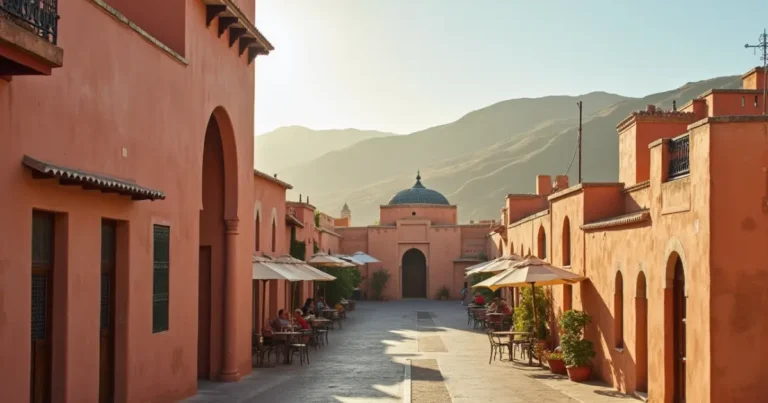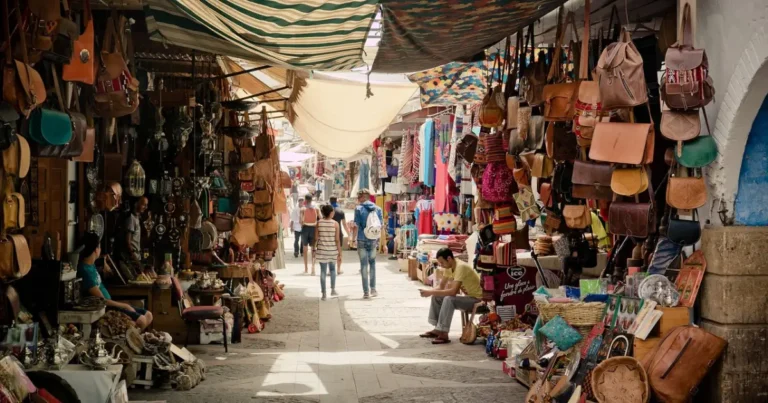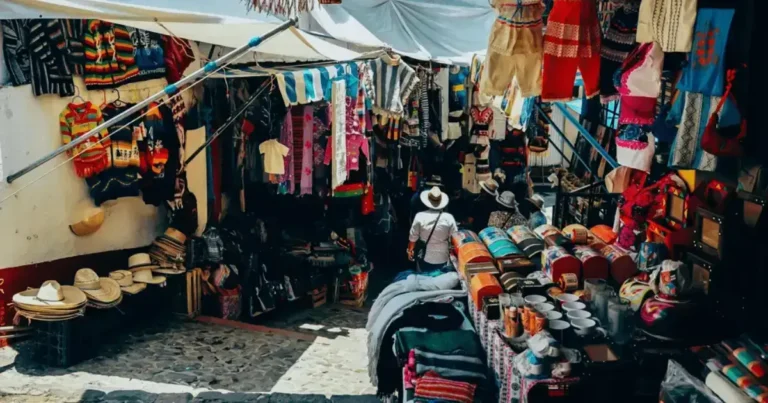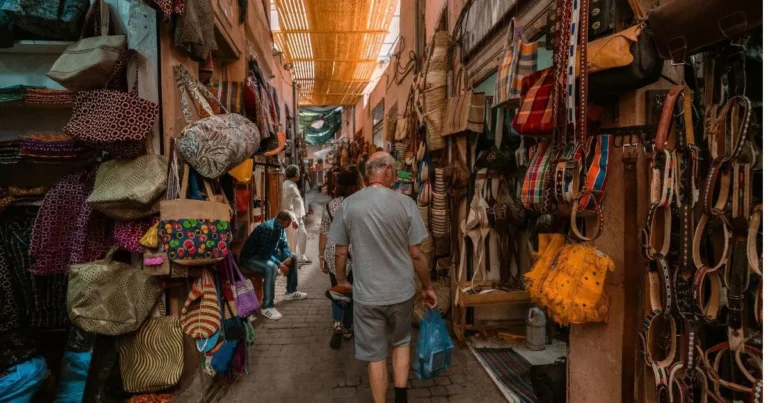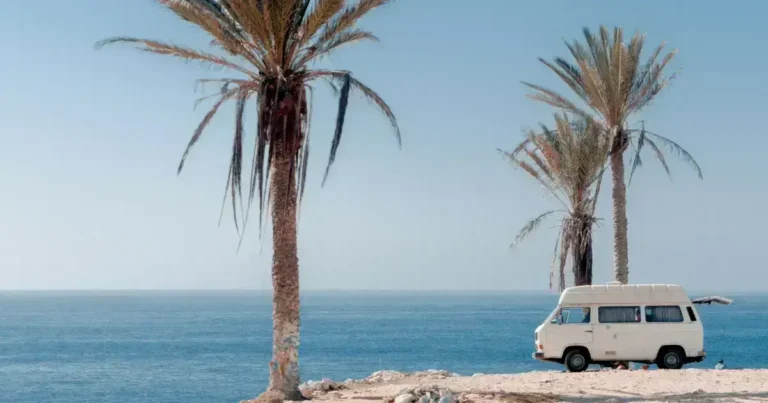Best Time to Visit Morocco, Guide for Travelers
Morocco, a land where ancient medinas stand alongside rugged mountain ranges and golden desert dunes meet the crashing waves of the Atlantic—this North African gem offers experiences as diverse as its landscapes. But when exactly is the best time to visit Morocco? The answer depends on what you’re seeking from your journey.
I once found myself wandering through Marrakech’s Jemaa el-Fnaa square in mid-July, the scorching 104°F heat forcing even the most enthusiastic vendors to seek shade. Just months later, I returned to trek the Atlas Mountains in October, enjoying perfect 70°F days that made every step a pleasure. These contrasting experiences taught me that timing is everything when planning a Moroccan adventure.
This guide will help you navigate Morocco’s complex climate variations and determine the ideal time for your visit based on your specific interests, whether you’re dreaming of surfing Atlantic waves, exploring ancient kasbahs, or trekking through dramatic mountain passes.
Understanding Morocco’s Climate: A Land of Extremes
Despite its relatively compact size, Morocco boasts remarkably diverse climate zones that can create vastly different experiences depending on when and where you visit.
Morocco’s Four Distinct Climate Regions
- Mediterranean Coast (North): Humid summers and mild, rainy winters characterize cities like Tangier and Tetouan.
- Atlantic Coast: Cities like Casablanca and Essaouira enjoy moderate temperatures year-round with cooling ocean breezes.
- Interior/Desert Regions: Places like Marrakech and the Sahara experience extreme temperature variations—scorching summers and potentially cold winters.
- Mountain Regions: The Atlas Mountains have their own microclimate, with snow in winter and mild summers at higher elevations.
Key Climate Factors to Consider
Understanding Morocco weather patterns is essential for planning your trip. Here’s what you need to know about the major climate factors:
| City | Winter (Dec-Feb) | Spring (Mar-May) | Summer (Jun-Aug) | Fall (Sep-Nov) |
|---|---|---|---|---|
| Marrakech | 40-65°F, Some rain | 55-85°F, Mild | 70-105°F, Dry | 55-90°F, Ideal |
| Casablanca | 45-65°F, Rainy | 50-75°F, Pleasant | 65-80°F, Humid | 55-80°F, Mild |
| Fes | 40-60°F, Rainy | 50-80°F, Spring bloom | 65-100°F, Hot | 55-85°F, Perfect |
| Essaouira | 50-65°F, Windy | 55-70°F, Mild | 65-75°F, Windy | 60-75°F, Pleasant |
| Merzouga (Sahara) | 35-65°F, Cold nights | 55-90°F, Pleasant | 75-115°F, Extreme heat | 60-90°F, Ideal |
Rain patterns also vary significantly across Morocco seasons. The northern and coastal areas receive most rainfall between November and March, while the southern desert regions remain dry nearly year-round, with occasional flash floods during rare rain events.
The Best Time to Visit Morocco: Month-by-Month Breakdown
January
Weather: Cold in the mountains (possible snow), mild along the coast, cool but pleasant in Marrakech (45-65°F).
Pros: Few tourists, lower prices, beautiful snow-capped Atlas Mountains views.
Cons: Cold nights in the desert, some rain in northern regions, limited mountain access.
Events: Yennayer (Amazigh New Year) celebrations.
Activities: Explore cities and souks, visit museums, enjoy hammams, experience desert camps (bring warm clothes for nights).
February
Weather: Similar to January but slightly warming. The desert starts to become more inviting during daytime.
Pros: Still low season pricing, increasingly comfortable temperatures, good city exploration weather.
Cons: Unpredictable rain showers, especially in the north.
Events: Almond Blossom Festival in Tafraoute.
Activities: Desert excursions (more comfortable than January), city tours, coastal explorations without summer crowds.
March
Weather: Spring begins! Pleasant temperatures (55-75°F) in most regions. Desert becomes quite comfortable.
Pros: Blooming landscapes, comfortable temperatures, fewer tourists than high season.
Cons: Occasional rain showers, can be windy.
Events: International Nomads Festival in M’hamid El Ghizlane.
Activities: Desert trekking, mountain hiking (lower elevations), cultural tours, photography.
April
Weather: Ideal conditions across most of Morocco. Marrakech enjoys temperatures around 70-80°F, perfect for exploration.
Pros: Lush, green landscapes, perfect temperature balance, abundant wildflowers in countryside.
Cons: Growing tourist numbers, some pricing increases.
Events: Marathon des Sables (ultra-marathon through the Sahara).
Activities: Hiking in the Atlas Mountains, desert camping, city exploration, garden visits (especially Jardin Majorelle).
“April showcases Morocco in full bloom. The countryside transforms into a canvas of wildflowers while the temperatures remain gentle enough for daylong explorations of bustling medinas.” — Local tour guide Mohammed
May
Weather: Warming temperatures (65-85°F) but still quite pleasant in most regions.
Pros: Perfect beach weather begins, ideal conditions for most activities.
Cons: High season begins with increasing crowds and prices.
Events: Festival of Roses in El Kelaa M’Gouna, Mawazine Music Festival in Rabat.
Activities: Beach visits begin, mountain trekking, desert excursions (before summer heat).
June
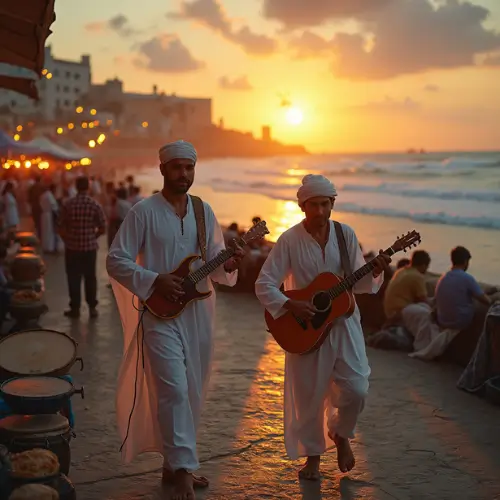

Weather: Summer arrives with hot temperatures in inland cities (80-95°F). Coastal areas remain pleasant.
Pros: Perfect beach conditions, warm evenings for outdoor dining.
Cons: Interior cities become quite hot, desert excursions less comfortable.
Events: Gnaoua World Music Festival in Essaouira.
Activities: Beach vacations, surf lessons, coastal explorations, northern mountain retreats.
July
Weather: Peak heat in interior regions (95-105°F+). Coastal areas offer relief with temperatures around 75-85°F.
Pros: Perfect weather for coastal activities, guaranteed sunshine.
Cons: Extreme heat in Marrakech and desert regions, peak tourist season with higher prices.
Events: Timitar Music Festival in Agadir, National Popular Arts Festival in Marrakech.
Activities: Focus on coastal regions, early morning or evening activities in hot areas.
August
Weather: Similar to July—hot everywhere except the coast. Highest temperatures of the year.
Pros: Warm ocean temperatures, vibrant coastal scene.
Cons: Most crowded month, highest prices, extreme heat inland.
Events: Moussem of Moulay Abdellah Amghar (religious and cultural festival).
Activities: Beach vacations, water sports, high mountain retreats.
September
Weather: Temperatures begin moderating (75-95°F), with pleasant evenings returning to inland cities.
Pros: Excellent conditions returning to most regions, summer crowds beginning to thin.
Cons: First half of the month still sees high-season pricing.
Events: Imilchil Marriage Festival in the Atlas Mountains.
Activities: Return to city exploration, beginning of desert season, coastal activities still excellent.
October
Weather: Perhaps the most perfect month across all regions (65-85°F). Comfortable days and cooler evenings.
Pros: Ideal temperatures everywhere, harvesting season brings fresh foods, beautiful light for photography.
Cons: Increasing popularity means you’ll still encounter plenty of tourists.
Events: Date Festival in Erfoud.
Activities: Desert experiences, mountain trekking, city exploration, photography tours.
“October represents that sweet spot where the harsh summer heat has retreated, yet warm sunshine bathes the country in golden light. It’s when Morocco truly shines.” — Travel photographer Yasmine Bennani
November
Weather: Cooling temperatures (55-75°F) with occasional early rain in northern regions.
Pros: Thin crowds in early November, comfortable temperatures for active exploration.
Cons: Increasing chance of rain, cooler evenings.
Events: Independence Day celebrations (November 18).
Activities: City tours, desert excursions, southern regions exploration, mountain hiking.
December
Weather: Winter arrives with cooler temperatures (45-65°F) and increased rainfall in the north.
Pros: Festive atmosphere, low season begins (except holidays), snow-capped Atlas Mountains views.
Cons: Colder weather, especially at night, some rain.
Events: Tan-Tan Moussem (UNESCO-recognized cultural festival).
Activities: City exploration, cultural experiences, museums, hammams, desert trips (with proper warm clothing).
Best Time to Visit Morocco Based on Your Interests
Beach Holidays
Best Time: June to September Where: Essaouira, Agadir, Taghazout, Asilah Why: Summer brings consistent sunshine and warm ocean temperatures. Essaouira offers a unique experience where you can escape the extreme inland heat while enjoying beach activities cooled by Atlantic breezes.
Desert Adventures
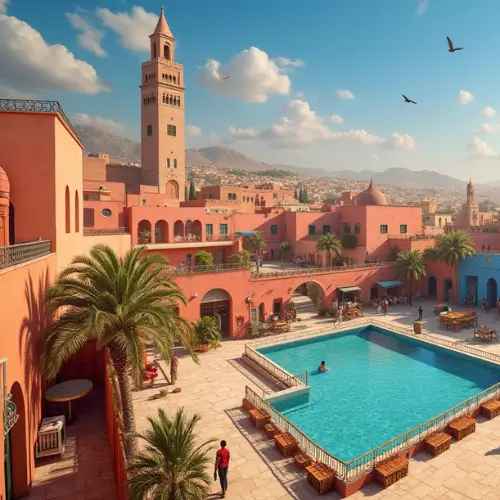
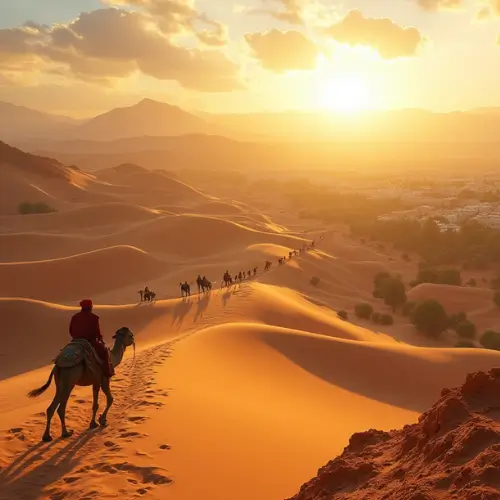
Best Time: October to April Where: Merzouga, M’hamid, Zagora Why: The Sahara’s extreme summer temperatures make desert exploration uncomfortable or even dangerous from May to September. October through April offers comfortable daytime temperatures for camel trekking and incredible stargazing during cool (sometimes cold) nights.
Hiking & Mountain Exploration
Best Time: April to May and September to October Where: High Atlas, Middle Atlas, Rif Mountains Why: These shoulder seasons offer ideal hiking conditions with moderate temperatures, fewer crowds, and beautiful scenery. Spring brings wildflowers, while autumn offers harvesting activities and clear mountain vistas.
Cultural Exploration & City Tours
Best Time: March to May and October to November Where: Fes, Marrakech, Meknes, Rabat, Chefchaouen Why: These periods offer ideal temperatures for exploring medinas, monuments, and museums without the exhaustion that summer heat can bring. The comfortable climate allows for full days of walking and sightseeing.
Surfing & Water Sports
Best Time: September to April Where: Taghazout, Essaouira, Sidi Kaouki Why: Winter brings the most consistent and impressive swells to Morocco’s Atlantic coast, making it a surfer’s paradise. Beginners might prefer the smaller waves of the shoulder seasons.
Budget Travel
Best Time: November to February (except holiday weeks) Where: Nationwide Why: Low season brings reduced accommodation rates, fewer tourists, and better negotiating positions in souks. While weather may not be perfect everywhere, the trade-off in pricing and authentic experiences can be worth it.
Luxury Travel
Best Time: April to May and September to October Where: Nationwide Why: These shoulder seasons offer the perfect balance of excellent weather conditions, fewer crowds than high season, and full operation of luxury services without the peak pricing of summer months.
Avoiding Crowds and High Season
Morocco’s tourism peaks during summer (June-August) and the European holiday seasons (Christmas/New Year and Easter). Here are strategies to enjoy a more authentic experience:
- Travel during shoulder seasons (March-May and September-November) for the ideal balance of good weather and manageable crowds
- Consider a January/February trip for the lowest tourist numbers (bundle up in the evenings!)
- Explore lesser-known destinations like Oualidia (a peaceful lagoon town), Asilah (an artistic coastal gem), or Imil (a Berber village in the High Atlas)
- Visit popular sites early in the morning or late afternoon when day-trippers have departed
- Incorporate weekdays into your itinerary for less crowded experiences at major attractions
- Book accommodations and desert tours well in advance for shoulder season visits, as the best options fill quickly during these increasingly popular periods
Regional Considerations for the Perfect Morocco Visit
Northern Morocco
Tangier & Mediterranean Coast
- Best Time: April to June and September to October
- Why: Pleasant temperatures, minimal rainfall, and fewer tourists make exploring this multicultural gateway between Africa and Europe much more enjoyable.
- Highlights: Explore the Kasbah, visit Cap Spartel where the Mediterranean meets the Atlantic, and take day trips to nearby Tetouan.
Chefchaouen (The Blue City)
- Best Time: March to May
- Why: Spring brings comfortable temperatures, occasional rainfall that enhances the vibrant blue colors of the city, and wildflowers in the surrounding Rif Mountains.
- Highlights: Photography in the blue-washed medina, hiking to the Spanish Mosque for sunset views, exploring nearby waterfalls.
Central Morocco
Fes & Meknes
- Best Time: March to May and October to November
- Why: The world’s largest car-free urban area (Fes el-Bali) is best explored in mild temperatures when you can comfortably get lost in the 9,000 narrow derbs (streets).
- Highlights: The ancient tanneries, medieval madrasas, and artisan workshops.
Rabat & Casablanca
- Best Time: April to June and September to November
- Why: These modern Moroccan cities experience humidity in summer, making spring and fall ideal for exploration.
- Highlights: Hassan Tower and Chellah in Rabat; the Hassan II Mosque in Casablanca.
Conclusion: When Is the Best Time to Visit Morocco?
After exploring Morocco’s diverse climate patterns and regional variations, the answer to “when is the best time to visit Morocco?” ultimately depends on your priorities:
- For the most universal comfort across all regions: April-May and September-October
- For budget travelers willing to adapt to weather: November-February
- For beach enthusiasts: June-September
- For desert adventures: October-April
- For cultural immersion with comfortable sightseeing: March-May and October-November
Morocco’s magic isn’t confined to any single season—each brings its own unique charm and opportunities. Whether you’re drawn by the spring wildflowers carpeting the Middle Atlas, the perfect autumn light illuminating ancient kasbahs, or winter’s crowd-free medinas, this diverse nation rewards travelers who time their visit thoughtfully.
The key is aligning your travel dates with your specific interests and desired experiences. With this guide in hand, you’re now equipped to plan the perfect Moroccan adventure, regardless of when you choose to visit this captivating country where Africa, Europe, and the Middle East converge in a spectacular cultural tapestry.
Ready to plan your Moroccan adventure? Explore our related guides on what to pack, cultural etiquette, and must-visit hidden gems to complete your perfect journey through this enchanting North African kingdom.


